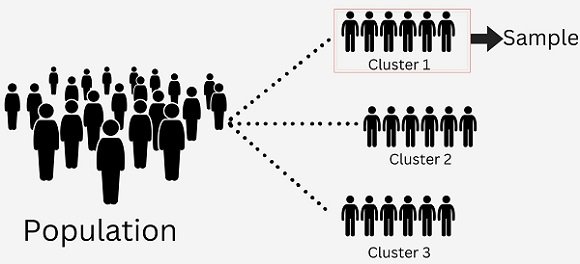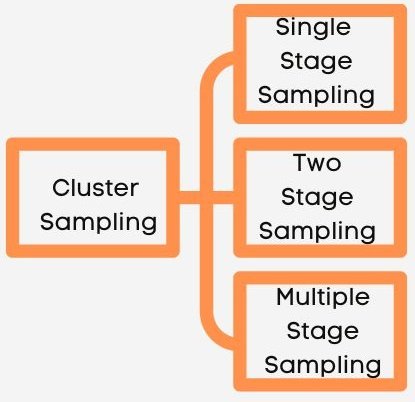Definition: Cluster Sampling involves the formation of suitable clusters of units. Thereafter, collecting information on all the units in that sample of clusters chosen for research, keeping in mind the appropriate sampling strategy.
For this purpose, the whole population to be studied is divided into small groups. After that, the researchers choose random groups using either simple random sampling or systematic random sampling techniques. These groups are known as clusters. A cluster is composed of a broad range of elements that are good representatives of the population.
Further, the elements of the clusters are known as elementary units. In cluster sampling, there will be more heterogeneity within the cluster and more homogeneity among clusters.
Basic Concept
Cluster Sampling relies on the researcher’s ability to divide the sampling population into groups. The division depends on the apparent or easily identifiable characteristics. The formation of clusters can be based on geographical proximity or common characteristics, which are correlated to the main variable of the study.
The members within each cluster are not similar, considering their attributes. However, different clusters are similar. So, we can infer that each cluster is a mini-representative of the whole population, as it possesses the characteristics of the whole population.
It is a type of probability sampling technique that studies large populations, especially one which is spread across a large geographical area. For obtaining a cluster sample, a particular number of clusters are selected randomly out of all the clusters present. After that, all the items covered by the selected clusters are included in the sample.
When the researcher uses this sampling method, it gives all the members of the sample an equal and known chance of becoming part of the sample. In this, the whole population is divided into various non-overlapping sub-groups or clusters. Non-overlapping subgroup means that members do not appear in more than one group.
After that, a random cluster is drawn, and all the elementary units of that cluster are observed to gather information.
Types of Cluster Sampling
Based on the clustering level, sometimes sampling is performed at different levels. These levels make up various stages of clustering, i.e. single, double or multiple. Here, we will discuss the different types of cluster sampling:
- Single Stage Cluster Sampling: The researcher performs sampling just once. It is a technique of sampling wherein each element of the chosen cluster is observed for testing purposes. Such a technique is not preferred when the population is large, and the clusters are too big to be included fully.
- Two-Stage Cluster Sampling: Rather than selecting all the members of a cluster, only a few members are picked from each group. In short, the researcher will gather data from a random subsample of individual units within each selected cluster. The researcher does so by implementing simple random sampling or systematic sampling to narrow down the desired sample.
- Multiple Stage Cluster Sampling: Multiple Stage Cluster Sampling involves a few more steps than two-stage cluster sampling. Effective research is conducted when complicated clusters are formed. So, the researcher performs the process of random sampling units within the groups again and again until he arrives at a manageable sample.
Advantages
- From the point of view of the cost involved, it is easier and, of course, more convenient to collect data from the nearby elements than to collect from the units dispersed over a region.
- They are also easy to obtain. Also, the focus is on the cluster rather than the whole population.
Process of Cluster Sampling
- At first, the researcher divides the whole population into clusters, as per the established rules.
- Next, clusters will be treated as sampling units.
- After that, a sample of clusters will be chosen using a sampling method.
- Lastly, the researcher will perform an enumeration of the selected clusters for collecting information on all elementary units.
Conditions for Cluster Sampling
The researcher prefers cluster sampling when:
- There is no reliable listing of elements present, and its preparation is costly.
- Even when the list of elements is present, it is difficult to locate and identify units.
- Every unit of the population should belong to only one cluster so that the total number of sampling units may cover all the units of the population under study without omitting any unit or duplicating any unit. Failure to fulfil this condition leads to the introduction of bias.
Points to Remember
- The cluster must be small in size. It must be consistent with the cost and limitations of the survey.
- The number of sampling units in each cluster has to be the same.
A word from Business Jargons
In this, we prepare a list of clusters rather than preparing a list of individual elements. The researcher prefers cluster sampling when the listing of elements is either unavailable or, even if it is available, it is not reliable. Further, keeping aside all the advantages, there is one limitation of cluster sampling, and that is it becomes inefficient when elements of the cluster are similar.



Leave a Reply